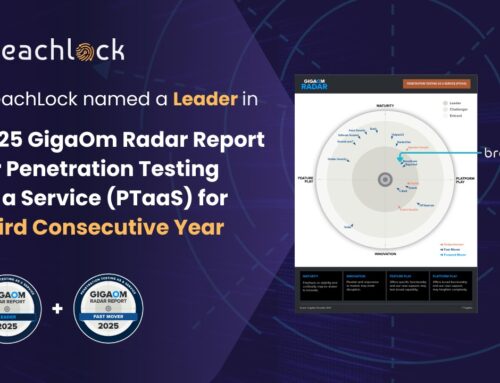
Multiple Chrome Vulnerabilities Expose Users to Arbitrary Code Execution Attacks
In the rapidly evolving landscape of cyber threats, web browsers often serve as the primary gateway for malicious actors. A recent announcement from Google has cast a stark reminder of this reality, revealing critical security vulnerabilities within its Chrome browser that could empower attackers to execute arbitrary code on users’ systems. This isn’t just a technical footnote; it’s a call to immediate action for anyone relying on Chrome for their digital activities.
Google has rolled out urgent updates for Chrome, specifically version 141.0.7390.65/.66 for Windows and Mac, and 141.0.7390.65 for Linux. These updates, announced on October 7, 2025, are crucial for mitigating the serious risks posed by three significant security flaws. Understanding these vulnerabilities and taking swift remediation steps are paramount to safeguarding your online presence.
Understanding the Critical Chrome Vulnerabilities
The latest Chrome update addresses three distinct, yet equally dangerous, security flaws. These vulnerabilities, if exploited, could allow attackers to gain significant control over a user’s system through arbitrary code execution. This means a malicious actor could potentially run their own code on your computer, leading to data theft, system compromise, or further malware infections.
While specific details of each vulnerability are often restricted until a majority of users have updated, the types of flaws typically seen in such critical alerts include:
- Heap Buffer Overflow (CVE-2025-XXXXX): This is a classic memory corruption vulnerability where a program attempts to write more data into a fixed-size memory buffer than it was designed to hold. This overflow can overwrite adjacent memory, leading to unpredictable program behavior, including the execution of arbitrary code injected by an attacker.
- Use-After-Free (CVE-2025-YYYYY): This occurs when a program attempts to use memory after it has been freed. If an attacker can control the contents of this freed memory before it is reallocated, they can manipulate the program’s execution flow, often leading to arbitrary code execution.
- Type Confusion (CVE-2025-ZZZZZ): This vulnerability arises when a program accesses an object using an incompatible type. Attackers can exploit this to bypass security measures, read or write to arbitrary memory locations, and ultimately achieve arbitrary code execution.
While the specific CVE numbers for these newly addressed vulnerabilities were not explicitly detailed in the initial announcement from the reference link, users should be aware that these types of flaws represent serious threats within browser environments.
The Threat of Arbitrary Code Execution
Arbitrary Code Execution (ACE) is one of the most severe types of cyberattacks. When an attacker can execute arbitrary code on a victim’s system, they effectively gain significant control. The implications are far-reaching:
- Data Exfiltration: Sensitive personal and corporate data, including credentials, financial information, and intellectual property, can be stolen.
- System Compromise: The attacker can install malware, ransomware, or spyware, turning the victim’s machine into a botnet member or a stepping stone for further attacks.
- Privilege Escalation: Initial code execution might happen with limited privileges, but attackers often quickly seek to escalate their access to administrative levels, granting them complete control.
- Persistent Access: Attackers can establish backdoors to maintain access to the compromised system even after reboots or attempts to mitigate the initial exploit.
The fact that these vulnerabilities exist within a widely used browser like Chrome underscores the critical need for constant vigilance and prompt updates.
Remediation Actions: Securing Your Chrome Browser
The most immediate and effective action to counter these Chrome vulnerabilities is to update your browser. Google has already released the patches, making protection straightforward:
- Update Immediately: For Windows and Mac users, ensure your Chrome browser is updated to version 141.0.7390.65 or 141.0.7390.66 or later. For Linux users, update to 141.0.7390.65 or later. Chrome typically updates automatically, but you can manually check by going to Settings > About Chrome.
- Enable Automatic Updates: Verify that automatic updates are enabled in your Chrome settings to ensure you always receive critical security patches without manual intervention.
- Regular Software Hygiene: Extend this practice to all your operating systems and applications. Keeping all software up-to-date significantly reduces your attack surface.
- Use a Robust Endpoint Security Solution: Implement and maintain a high-quality antivirus/anti-malware solution that can detect and prevent malicious activities, even if a browser vulnerability is exploited.
- Be Wary of Suspicious Links: While these vulnerabilities can be exploited through various means, phishing attempts often play a role in delivering malicious content. Exercise caution when clicking on unfamiliar links or opening suspicious attachments.
Chrome Vulnerability Detection & Mitigation Tools
While updating Chrome is the primary defense, various security tools can complement this by offering enhanced detection and mitigation capabilities.
| Tool Name | Purpose | Link |
|---|---|---|
| Google Chrome Internal Updater | Ensures Chrome is running the latest patched version. | chrome://settings/help |
| Endpoint Detection and Response (EDR) Solutions | Detects and responds to suspicious activities (including arbitrary code execution) on endpoints. | Gartner EDR Overview |
| Vulnerability Scanners (e.g., Nessus, OpenVAS) | Identifies unpatched software and misconfigurations on networks and endpoints. | Nessus / OpenVAS |
| Web Application Firewalls (WAFs) | Protects web applications from common attacks, potentially blocking exploit attempts against browsers. | Cloudflare WAF |
Conclusion
The discovery and patching of these critical Chrome vulnerabilities serve as a timely reminder that even the most widely used software requires constant attention to security. Arbitrary code execution attacks are a severe threat, capable of compromising sensitive data and systems. By understanding the risks and promptly applying the recommended updates, users and IT professionals can significantly reduce their exposure to these threats. Prioritize your software updates, maintain strong security hygiene, and stay informed about the latest cybersecurity advisories to safeguard your digital environment.





